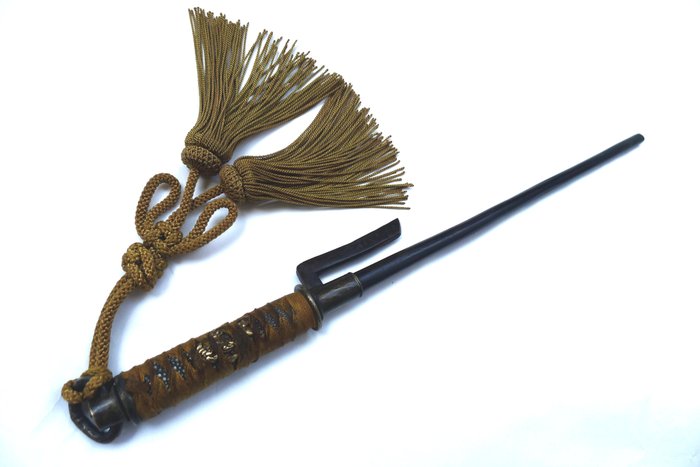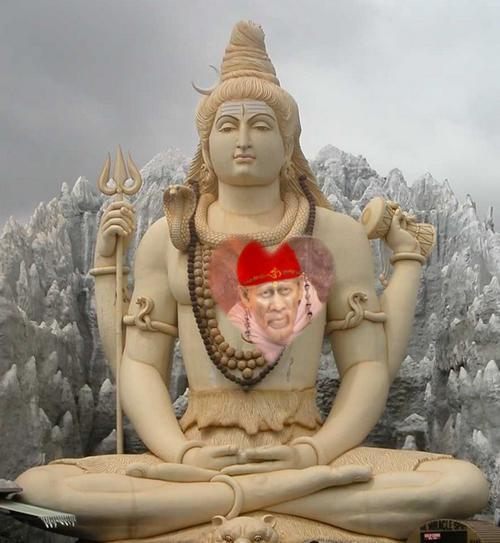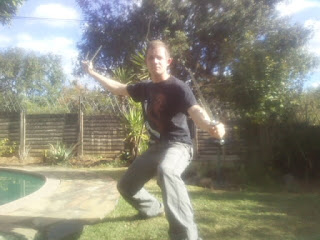The Sai- aka Raphael's Daggers
Hello, everyone!
Welcome back to the next installment of my newly begun series of posts on my weapons.
I know by now that most of my followers know what these are.
The Sai is most commonly associated with Okinawan martial arts, that are known to us today as Kobujutsu and Kobudo.
 |
| Had to do the Wolverine! :D |
This weapon, however, has a long history of being used in China. Thanks to Jesse Enkamp sharing his research on Karate's Chinese roots I have found that it was actually well known in Southern China.
A number of Kung Fu Elitists who would not mind telling you that they study Mok Gar (Mok Family Style) will tell you that the Sai is known to them as the Tee Chek or Iron Ruler.
The easiest Mandarin name that I have ever heard for the weapon is Cha- which is not to be confused with the Mandarin word for tea.

Researching this weapon's history is a tricky affair.
You can run into somebody tell you that this was the truncheon of Okinawan and South Chinese police officers. This sounds much like the Jutte that was used by Samurai policemen in Japan in feudal times.

You will find many historians telling you that the prong at the side of the jutte is meant to trap sword blades or long weapons. Sword blades seem to come to mind in most discussions of the weapon, though.
Historically as well- I must add- neither the Sai nor the Jutte got used in pairs. Where it first got used as a double weapon I have yet to find out.

Well- before you settle on the "police truncheon theory" somebody has to explain why Shiva is depicted on ancient statues predating the Feudal times of Japan or the Qing Dynasty to be holding a similar weapon...
Like the Nunchaku, the Sai is likely to make anthropologists shake their heads in disbelief. All other civilisations have had rocks, sticks, knives, spears, swords and other weapons of which the use and purpose can be grasped intuitively. Why on earth would anyone want a metal bar with two prongs on the side just to maybe trap a sword blade...?
Well...
In ancient Western weaponry we do not see a weapon like this. From the Middle Ages and onward Western police officers were apparently concerned with stabbing, arresting, restraining and bludgeoning criminals, but trapping sword blades do not seem to have come to mind.
However- somewhere in the forgotten ranks of pre-medieval weaponry- we find a similarly absurd weapon. The Trident!
I have just done a random Google search on a hunch when the Trident came to mind and voila!
You can see below what I have found-

Now... with the Songjiekun (Chinese Nunchaku) having started out as a long weapon that became miniaturised later on I suspect that... yes...

The Cha has most likely started out as the San Cha or Chinese trident. Similar reasons to those for the miniaturisation of the Songjiekun could apply here.
The trapping function does not seem to come natural to me, so I have looked a bit at Katas or Taolu from both Okinawan and Chinese styles. I must say- the solid steel shafts of the sai that I have feel hard enough to break a sword blade upon impact, let alone trap it. It seems, however, that if you are nimble enough to flip the sai in your hand you kight be able to block a straight thrust like what I have done in the last gif and then catch hold of it so that you have less trouble delivering your counterattack.
Holding the weapon upside down with the shaft resting against the forearm makes for a small shield and also a stabbing weapon that can be used at a range that is too close for comfort on users of long weapons.
Well... If you think this is weird then stick around for next week's post. The next weapon defies logic even further...







Comments
Post a Comment